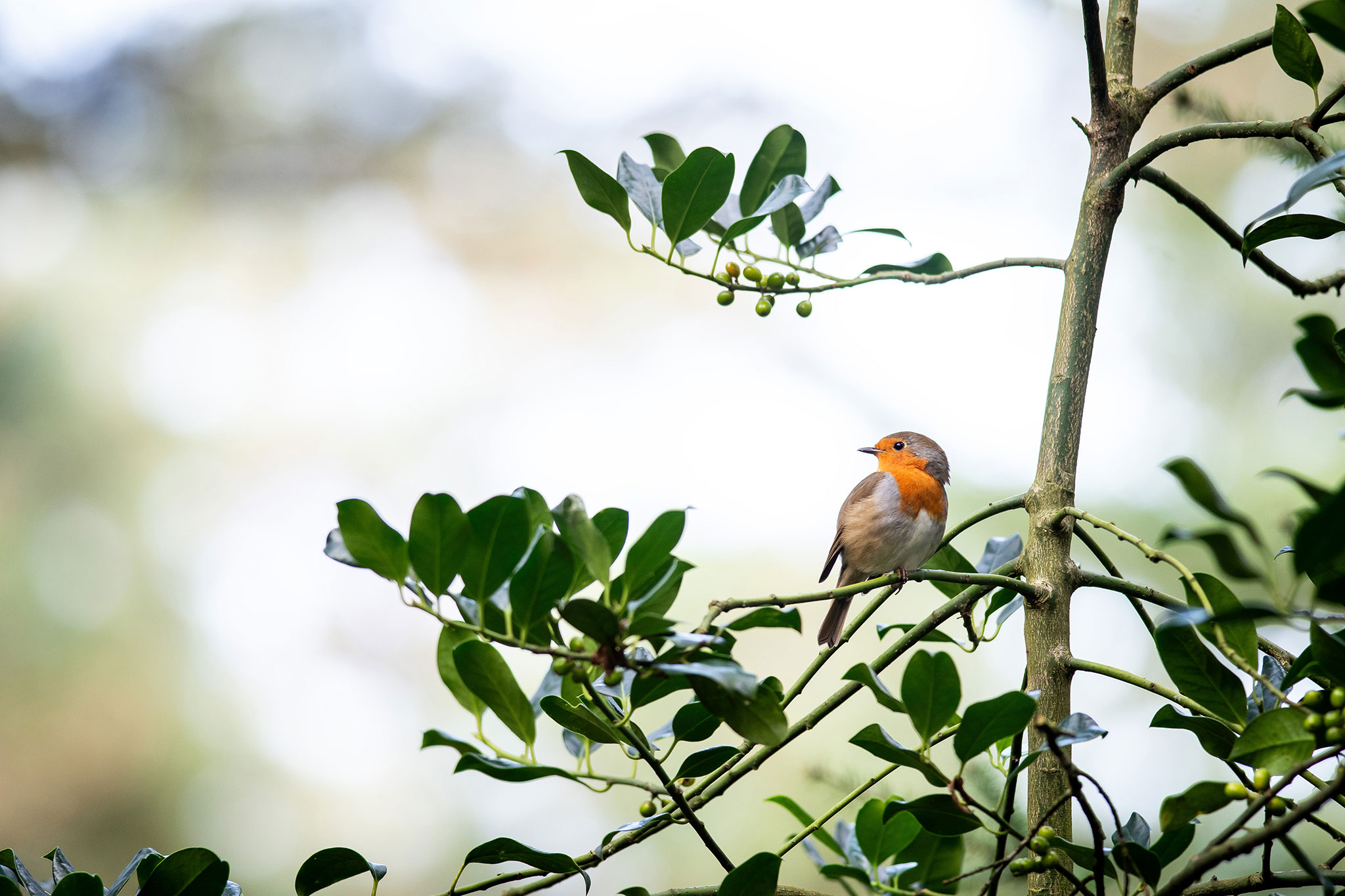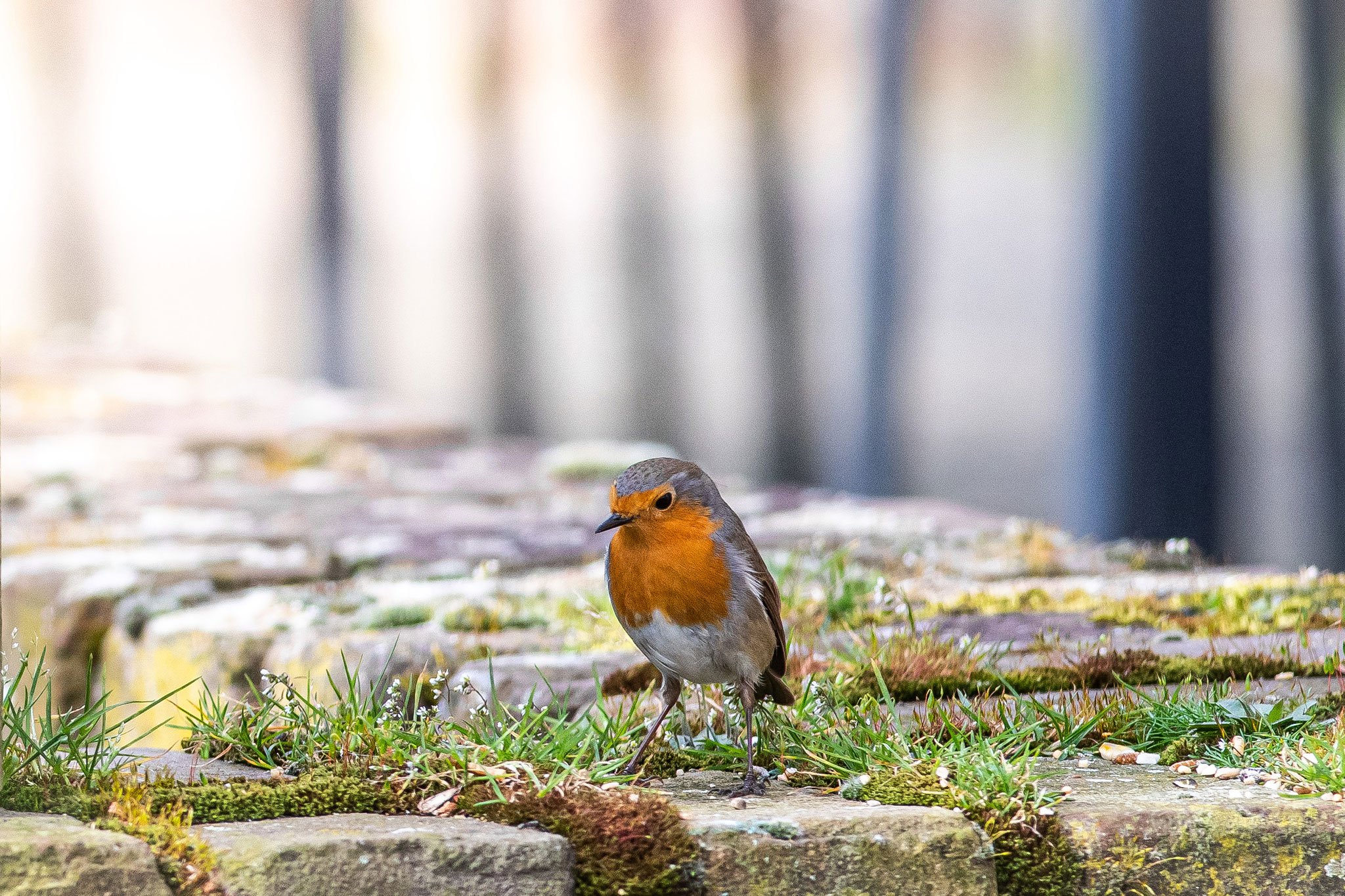If the weather is particularly cold and snowy, it is good to give your robins an additional helping hand food-wise to prevent population levels suffering. They tend to prefer foraging on the ground, so a bird feeder that can be placed in a safe place at ground level (or a bird table) is ideal. Robins like to eat worms, insects, seeds and fruits and they guard the areas in which these can be found fiercely, although males and females usually do pair up to share at this time of year.
When feeding, aim to emulate their natural diet by feeding protein-rich mealworms, energy-rich seeds and soft fruits. Our robin blend will take the guesswork out of this, plus you can also treat them with our Peanut Cakes.
In the summer, the robins diet mainly consists of insects, but as it gets colder in the winter, they then resort to fruits and grains, due to the lack of available food in colder temperatures.
How to help breeding robins & optimal nesting boxes
Robins are so-called half-cavity breeders. Our half-open nest boxes are adapted to the special needs of Robins and other half-hollow breeders. It is important that they are placed as low as possible so that the nest is close to the ground. It won’t be long until the first Robin will be moving into your nest box.
If the weather is especially warm, robins may start courting as early as January, but this has been quite rare in recent years and March onwards is more typical. The birds pair up and the female builds the nest and lays the eggs. Robins have been known to nest in some very unusual places - including old footballs - but you can increase their chances of success and prevent predation using a nest box with a wide opening.
Provide plenty of supplementary food, as the male will need to supply his mate with lots of nourishment during this period and it's best to help him avoid having to fly too far. Both parents will look after the chicks in their nest, while they fledge at just 14 days and remain dependent on their fathers for food for almost a month - the mothers are off to prepare for another brood. Any seed you can put out is therefore likely to be gratefully received, but they will be especially pleased with mealworms.
Nest building, breeding & other habits
The robin's nest is built by the female, which is constructed using moss, stalks and dry grass blades. Robins stay on their eggs for 12-15 days. The offspring receive assistance from their parents when hatching, before the mother then removes the shell and deposits it several metres away from the nest. Keeping the shells inside the nest itself would be too conspicuous.
Robins love to be in the water, where they hunt for small fish and insects in shallow waters or enjoy bathing.
Tenaciously & stubbornly. With its red breast and curious expression, the Robin is widely regarded as one of the UK's most attractive birds. However, the cute appearance doesn't tell the whole story. Robins are fiercely territorial and take aggressive action against territorial intruders. This territoriality often brings the robin into conflict with other bird species, and it is not uncommon to see aggressive behaviour towards smaller birds (sparrows, small tits). It has been suggested the red breast may play a role in this behaviour, with the bright colour used as a threat display to intimidate rivals. Such behaviour is in stark contrast to the way in which Robins interact with humans. The birds often seem completely unafraid of people and will sometimes take food directly from the hand.
How to identify a robin - appearance, sound & age distinction
Robins were voted Britain's favourite bird in 1966, and thanks to this and their distinctive plumage, most people will have no trouble identifying them. However, males and females are identical with their orange-red breasts and brown backs. Young birds on the other hand are speckled golden brown all over and don't have the bold colouring.
You'll be able to see robins all year-round. During winter, resident populations are boosted by immigrants from Scandinavia and elsewhere to stay for the season, as well as a few passing through on their way to northern Africa.
The robin is a virtuoso singer
Robins can be identified if you can't see them by their song - alarm calls are a rapid 'tick, tick, tick', while their usual tune is a melodious warbling in a higher pitch than a blackbird. Unlike most other songbird species, the female robins can also sing. The song is very similar to that of males, but slightly shorter and quieter.
Life expectancy of the robin
The life expectancy of robins is rather short, with a high mortality in the first 12 months. However, on record there are robins that have lived to be ten years old.
Classification, population, distribution & more
Not a thrush but a flycatcher - The Robin is a member of the chat family, which is comprised of a wide number of small, insect-eating birds found across the world. Traditionally, this group has been considered part of the wider thrush family, but more recently has been reclassified as part of the Old World flycatcher family.
The robin is one of the most common breeding birds. According to data, it is estimated there are around 6,700,000 breeding pairs in the UK. In some areas (such as Scottish pinewoods with well-spaced, mature trees and few shrubs), breeding densities can be as low as 10 pairs per sq km, while a lowland woodland can support as many as 200-300 pairs per sq km.
The Robin we know and love is scientifically known as the European Robin and can be found across the continent, extending as far east as western Siberia and south to northern Africa. Across the world, there is a huge variety of other Robin species, including the White-Starred Robin of southern Africa and the Magpie Robins of Asia and Africa. There is also the American Robin, a common bird in the US, which is actually a type of thrush. It shares the European Robin's red breast, but is more similar to a Blackbird in general proportions.
Environment & urban adaptations
The robin avoids extensive garden environments, where there are less wildflowers and hedgerows. Instead, they feel perfectly at home in a more rustic location, that is rich in structure and somewhat untidy.
The Robin is not a nocturnal bird, but living in urban areas has changed this to some extent. In towns and cities, it is now common to hear the species singing during the evening, something which rarely occurs in rural habitats. More than one theory has been put forwards to explain this change. Some people believe the artificial light in urban areas makes Robins start to sing in the evening. However, it has also been suggested the behaviour is due to the fact the noise created by traffic and humans is reduced later in the day, making it easier for the birds to communicate with each other.
Folklore figure - the christmas bird
The Robin is a prominent figure in folklore, with the most obvious example being its association with Christmas. This is believed to date back to the Victorian period and the fact the postmen of the period were nicknamed Robins due to their red uniforms. People would eagerly await the delivery of the postmen during the Christmas period and the Robin quickly became a symbol of the festive season.
Cultural depictions of the species date back further than this, however. In Norse mythology, the Robin was associated with the god Thor, while another myth claims the species developed its red breast after being touched by the blood of Jesus as he hung on the cross.














